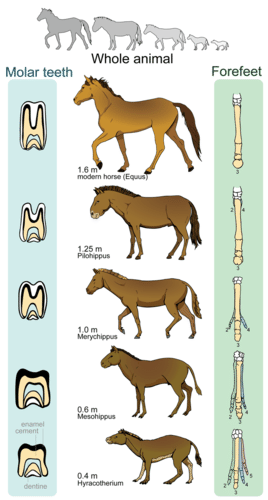Evolution
What is it?
How does it happen?
Why is it controversial?
Why do scientists believe it's true?
Who is this Darwin guy?
What trends are there?
Let's begin with what evolution is (and what it is not).
Evolution is the change in a population's genetic material over time.
An individual cannot evolve. Growth is not evolution. Hair turning white is certainly not evolution. Only a population can evolve. And it takes generations.
How do we know that life evolves? What proof is there?
Let's look at some evidence:
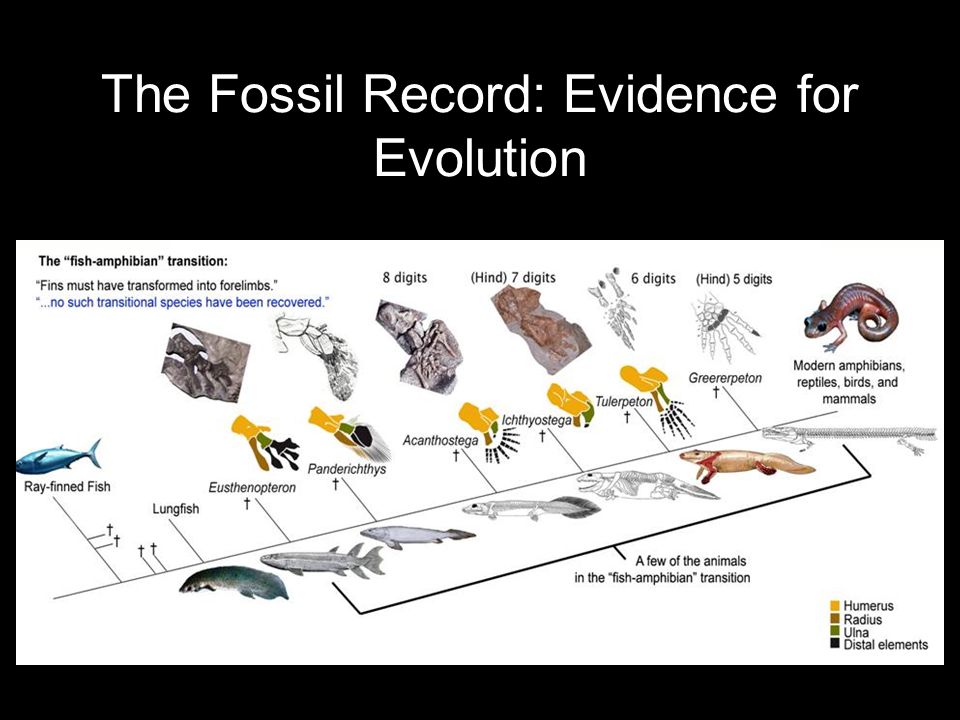
The most often cited evidence is the fossil record. This states that as you go back in time (by digging deeper in the earth or dating the fossils to confirm their age), the skeletons have changed over time. Here it a horse's fossil record:
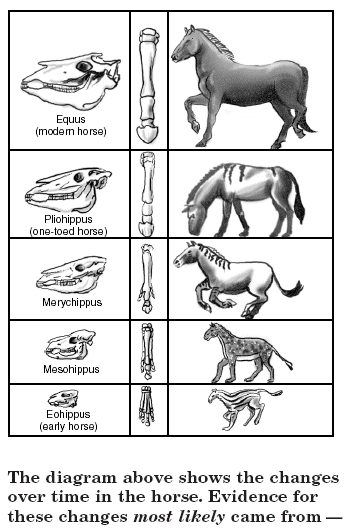
They grew bigger and lost toes over time. They changed--they evolved.
This is pretty convincing to many, but we have no proof that the one animal changed into the other, only that one animal existed and then a similar, but slightly different animal did. Also, the way we know how old the bones are has to do with complex radioactive dating and many people do not understand that.
One interesting thing with looking at the fossil record is that there will be one creature for a long time and then all of a sudden, there will be the next version. Like it was stable and then something pressured it to change.
Another thing we can do is compare the anatomy of organisms:

This will show us which ones are more related evolutionarily. Whales and bats have fingers like us, but fish and birds do not implying that whales and bats are more closely related to us even though they swim or fly like fish or bats.
Homologous structures are ones that are the same despite being used for different purposes:
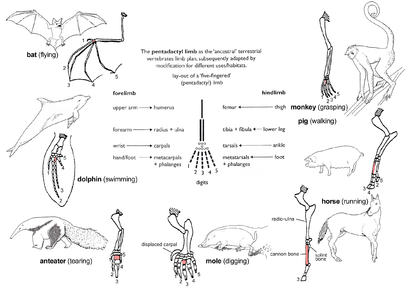
Analogous structures are used for the same purpose, but very different inside:

Vestigial structures are left over anatomy from an evolutionary ancestor:
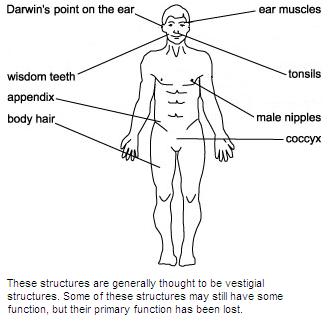
We can compare embryos:
Pretty similar early on. But then:
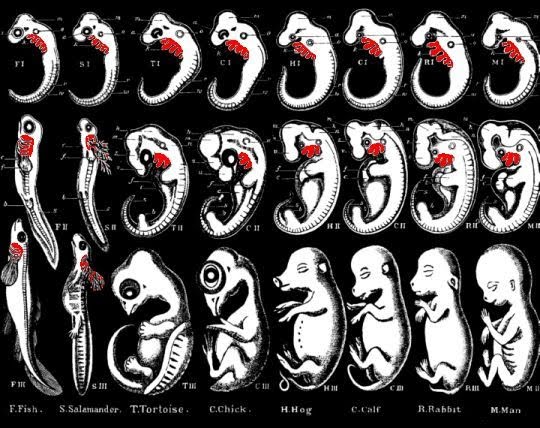
This shows relationships that sometimes hide in the born creature.
We can compare DNA and get a clearer picture of relationships.
But the only evidence that can be directly observed and controled in a lab setting is bacterial resistance. I have caused a population of bacteria to change over time by adding antibiotics to the dish and only allowing the resistant ones to survive and reproduce. Thus, all the offspring were resistant. The population went from having a small fraction resistant to having 100% resistant over night. I caused evolution!
So, if we believe that populations evolve over time, the next important question is how? What drives this change?
The first person to pose a mechanism for this was a brilliant scientist named Lamarck.
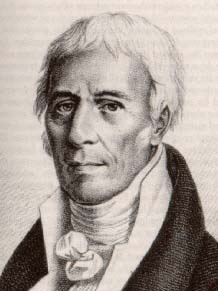
Unfortunately, his theory was laughable. He proposed that organisms strived to their environment and the traits they acquired were passed on to their offspring. For example, the proto-giraffe stretched its neck to reach higher leaves and passed the long neck onto its babies who continued stretching their necks and over time we got giraffes with long necks:

The was laughable because acquired traits are not passed along (if I lose a finger in an accident and then have a baby, it will not be born with 9 fingers).
However, now (with epigenetics) we are discovering that he may have been on to something, but more on that later in the DNA unit.
Around this same time, other smart people were making contributions.
A geologist named Lyell showed that the world was much, much older than previously believed.
An economist named Malthus showed that organisms way over produce offspring and the vast majority of them die off (a single maple tree can make millions of seeds each year!). The environment kills them off.
A zoologist named Cuvier discovered lots of homologous, analogous, and vestigial structures.
This paved the way for this man:

Charles Darwin.
He was a naturalist / scientist who traveled around the world on the HMS Beagle and noted lots of similarities and diversity and began to pick up on the driving factor--the environment.
In his view, there is variation within every population. Organisms overproduce offspring. The environment pressures the organisms. The ones best adapted to their environment live better (become stronger and healthier) and reproduce more, thus passing on their genetic material in a higher frequency than their less adapted siblings. Over many generations the frequency of the whole population shifts to show the adaptation.
If the pressure is strong enough, the evolution can happen quickly.
This has been summed up as "Survival of the Fittest."
What have been the trends in evolution?
Single celled --> multicelled
Why? What are the advantages of being multicellular? Are there any advantages to being single-celled?
Tiny --> large
Why? What are the advantages of being big? Are there any advantages to small?
Sea dwelling --> land dwelling
Why? What are the advantages of being on land? Are there any advantages to in the sea?
Anaerobic --> aerobic
Why? What are the advantages of being aerobic? Are there any advantages to being anaerobic?
Other terms to often used when discussing evolution:
Species - a group of organisms capable of interbreeding and producing fertile offspring
Population - all the organisms of the same species in a geographic region
Adaptation - a change that better fits an environment
Gene pool - the total variety in a population
Competition - when resources are scarce and some must die
Fitness - how adapted to their environment an organisms is
Speciation - the process by which new species arise
Genetic drift - non-pressured evolution
Coevolution - when two or more organisms evolve together (dependant)
Punctuated equalibrium - long periods of no evolution followed by intense periods of massive die offs and quick changing evolution
So what important information should you remember from this unit?
What evolution is.
Evidence for evolution.
The theories of evolution, including survival of the fittest
What the driving force for evolution is.
What the major trends have been and why.
